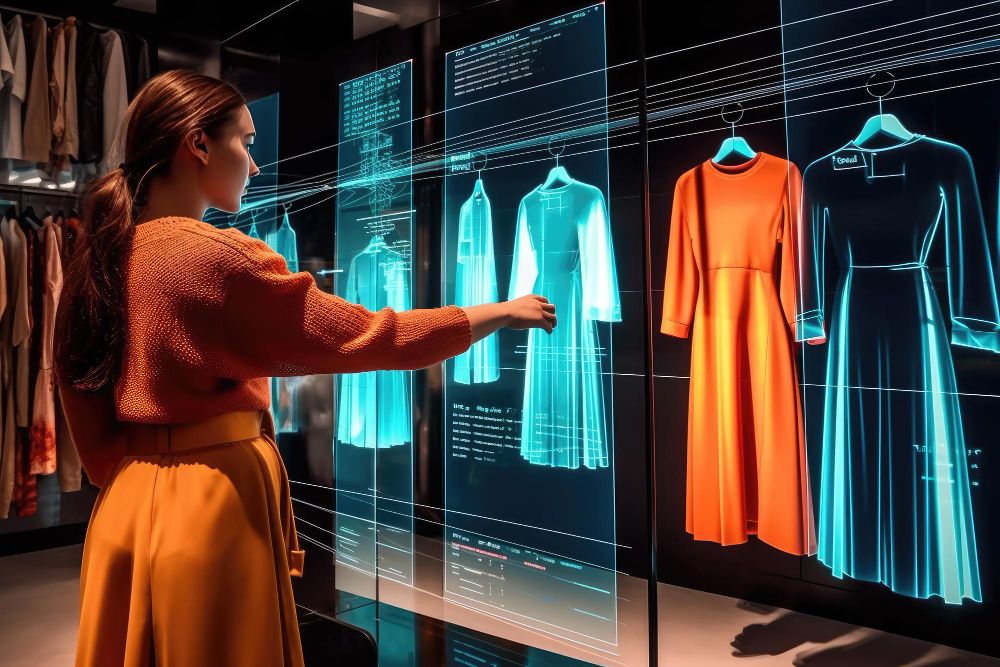# The Future of Clothing Manufacturing: Trends and Innovations
In an era dominated by fast fashion, a significant shift is underway in the clothing manufacturing industry. As shoppers grow more aware of the environmental and ethical impacts of their buying choices, it begs the question: What lies ahead for the future of clothing production? This blog post explores the latest trends and innovations that are set to redefine the industry.
## Embracing Sustainability and Ethical Practices
### The Push Towards Eco-friendly Materials

- Biodegradable Fabrics:
With a growing demand for sustainable fashion, McKinsey reports that over 60% of consumers are willing to pay a premium for eco-friendly products. This has spurred cloth manufacturers to explore alternatives such as biodegradable and recycled fabrics. For example, materials made from algae, coffee grounds, and agricultural waste are entering the market, offering sustainable options that decompose naturally without leaving a trace.
- Plant-based Leather:
The search for sustainable alternatives to animal leather has led to remarkable innovations such as mushroom leather and pineapple leather. These materials are not only environmentally friendly but also durable and versatile, suitable for a wide range of fashion items.
### Circular Fashion Model
- Recycling and Upcycling:
An increasing number of clothing manufacturing companies are adopting circular fashion models to minimize waste and promote sustainability. This approach includes recycling old garments into new ones and upcycling waste materials into high-quality products. Brands are also implementing take-back schemes, encouraging consumers to return worn-out clothes for recycling or refurbishment.

## Technological Advancements in Manufacturing
### Automation and Robotics
- Efficiency and Precision:
The adoption of automation and robotics in clothing manufacturing has significantly improved efficiency and precision. Automated cutting machines and sewing robots can produce garments faster and with greater accuracy, reducing material waste and labor costs. This technological shift is particularly evident in clothing manufacturers in India, where automation is revolutionizing traditional production methods.
- Customization at Scale:
Technological breakthroughs like 3D printing are empowering manufacturers to provide personalized clothing choices to a broader audience. This means consumers can now enjoy personalized garments that fit perfectly without the traditional wait times and high costs associated with custom tailoring.

### Integration of AI and IoT
- Smart Fabrics:
The fusion of AI and IoT with textile manufacturing is giving rise to smart fabrics. These innovative materials can adapt to environmental changes, monitor the wearer's health, and even generate power from body movements. The potential applications range from fitness tracking to medical monitoring, opening new frontiers in wearable technology.
- Supply Chain Optimization:
AI algorithms are transforming supply chain management, offering predictive insights on trend forecasting, inventory management, and demand planning. This not only enhances efficiency but also reduces overproduction and waste, aligning with the industry's sustainability goals.

## The Role of Digital Platforms and E-commerce
### Direct-to-Consumer Models
- Online Presence:
The rise of e-commerce has enabled wholesale and ready-made clothes manufacturers to adopt direct-to-consumer models. This shift allows for better profit margins, direct customer feedback, and a more personalized shopping experience. Digital platforms are also facilitating global reach, enabling small and medium-sized manufacturers to enter international markets.

### Virtual Fitting Rooms
- Reducing Returns:
AR and VR-powered virtual fitting rooms are transforming online shopping. By enabling the customers to virtually try on clothes, these innovative tools minimize returns, leading to greater customer satisfaction and loyalty.
## Local Manufacturing and Craftsmanship
### Supporting Local Artisans
- Sustainability and Heritage:
There is a growing trend towards valuing locally made garments supporting sustainability and cultural heritage. Many clothing manufacturers are partnering with local artisans to produce unique, handcrafted pieces that celebrate traditional craftsmanship while adhering to modern ethical standards.

### Made-to-Order Production
- Reducing Waste:
The shift towards made-to-order production is a significant step in reducing waste and combating overproduction. By producing garments only when there is a demand, manufacturers can significantly lower their environmental impact and promote a more sustainable fashion industry.
## Conclusion
The future of clothing manufacturing is poised at the intersection of innovation, sustainability, and technology. As the industry evolves, it presents an opportunity for fashion brands and manufacturers to lead the way in adopting practices that are not only environmentally responsible but also economically viable and technologically advanced.
ZYOD is among the pioneers embracing these changes, offering forward-thinking solutions that cater to the evolving needs of the fashion industry. By focusing on sustainable practices, technological innovations, and the empowerment of local craftsmanship, ZYOD is contributing to a future where clothing manufacturing is not just about fashion but also about making a positive impact on the world.
The path forward is evident: for the fashion industry to thrive, embracing innovation and sustainability is not just an option but a necessity. Through collaborative efforts and a commitment to change, we can look forward to a future where clothing manufacturing reflects the best of what technology and creativity have to offer.







